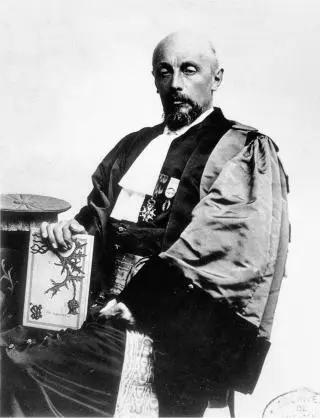Tom Phillips - Humans - A Brief History of How We F*cked It All Up
Здесь есть возможность читать онлайн «Tom Phillips - Humans - A Brief History of How We F*cked It All Up» весь текст электронной книги совершенно бесплатно (целиком полную версию без сокращений). В некоторых случаях можно слушать аудио, скачать через торрент в формате fb2 и присутствует краткое содержание. Город: Toronto, Год выпуска: 2019, ISBN: 2019, Издательство: Hanover Square Press, Жанр: История, Юмористические книги, на английском языке. Описание произведения, (предисловие) а так же отзывы посетителей доступны на портале библиотеки ЛибКат.
- Название:Humans: A Brief History of How We F*cked It All Up
- Автор:
- Издательство:Hanover Square Press
- Жанр:
- Год:2019
- Город:Toronto
- ISBN:978-1-48805-113-5
- Рейтинг книги:4 / 5. Голосов: 1
-
Избранное:Добавить в избранное
- Отзывы:
-
Ваша оценка:
- 80
- 1
- 2
- 3
- 4
- 5
Humans: A Brief History of How We F*cked It All Up: краткое содержание, описание и аннотация
Предлагаем к чтению аннотацию, описание, краткое содержание или предисловие (зависит от того, что написал сам автор книги «Humans: A Brief History of How We F*cked It All Up»). Если вы не нашли необходимую информацию о книге — напишите в комментариях, мы постараемся отыскать её.
Humans: A Brief History of How We F*cked It All Up — читать онлайн бесплатно полную книгу (весь текст) целиком
Ниже представлен текст книги, разбитый по страницам. Система сохранения места последней прочитанной страницы, позволяет с удобством читать онлайн бесплатно книгу «Humans: A Brief History of How We F*cked It All Up», без необходимости каждый раз заново искать на чём Вы остановились. Поставьте закладку, и сможете в любой момент перейти на страницу, на которой закончили чтение.
Интервал:
Закладка:
Even after the first papers pushing back at the existence of polywater were published (also in Science , in 1970), it was years before everybody finally admitted that the whole thing had been a mistake. Ellison Taylor, one of the skeptics who had been involved in finally disproving polywater, wrote in the Oak Ridge National Laboratory’s in-house magazine in 1971: “[We] knew they were wrong from the beginning, and I suppose lots of people who never got involved knew it, too, but none of the chief protagonists has given any sign of admitting it.” Popular Science even ran an article entitled “How You Can Grow Your Own Polywater” in June of 1973 (subtitle: “Some experts claim this rare substance doesn’t exist. Yet here’s how you can harvest enough of it for your own experiments”).
It’s far from the only time something like this has happened. Of course, the early centuries of science (even before the term science was invented) were full of popular theories that turned out to be completely wrong—in the eighteenth century it was phlogiston, the mysterious substance that lurked inside all combustible things and was released when they burned; in the nineteenth, luminiferous ether, an invisible substance permeating the universe through which light was transmitted. But those have the distinction of at least being attempts to explain something that couldn’t be explained with the science of the time. Which, more or less, is kind of how science is supposed to work.
The reason science has a fairly decent track record is that (in theory, at least) it starts from the sensible, self-deprecating assumption that most of our guesses about how the world works will be wrong. Science tries to edge its way in the general direction of being right, but it does that through a slow process of becoming progressively a bit less wrong. The way it’s supposed to work is this: you have an idea about how the world might work, and in order to see if there’s a chance it might be right, you try very hard to prove yourself wrong. If you fail to prove yourself wrong, you try to prove yourself wrong again, or prove yourself wrong another way. After a while you decide to tell the world that you’ve failed to prove yourself wrong, at which point everybody else tries to prove you wrong, as well. If they all fail to prove you wrong, then slowly people begin to accept that you might possibly be right, or at least less wrong than the alternatives.
Of course, that’s not how it actually works. Scientists are no less susceptible than any other humans to the perils of just assuming that their view of the world is right, and ignoring anything to the contrary. That’s why all the structures of science—peer review and replication and the like—are put in place to try and stop that happening. But it’s extremely far from foolproof, because groupthink and bandwagon-jumping and political pressure and ideological blinders are all things in science, as well.
That’s how you can get a load of scientists at different institutions in different countries all convincing themselves they can see the same imaginary substance. The saga of polywater isn’t alone there: six decades earlier, the scientific world had been gripped by the discovery of a whole new type of radiation. These remarkable new rays (which it would eventually turn out were entirely imaginary) were called N-rays.

N-rays were “discovered” in France, and they took their name from the town of Nancy, where the scientist who first identified them worked—René Prosper Blondlot, an award-winning researcher who was widely acclaimed as an excellent, diligent experimental physicist. This was 1903, less than a decade after the discovery of X-rays had sent waves through the field, so people were primed to expect that new forms of radiation could be discovered here, there and everywhere. What’s more, just as with polywater, there was more than a little international rivalry at play—X-rays had been discovered in Germany, so the French were eager for a piece of the action.
Blondlot first uncovered N-rays by accident—in fact, it was while he was conducting research on X-rays. His experimental equipment involved a small spark that would grow brighter when the rays passed by, and his attention was caught when he saw the spark flare up at a time when no X-rays could possibly be affecting it. He dug deeper, gathered more evidence and in spring 1903 announced his discovery to the world in the Proceedings of the French Academy . Fairly quickly, a large part of the science world went N-ray crazy.
Over the next few years, more than 300 papers would be published about the remarkable properties of N-rays by over 120 scientists (Blondlot himself published 26 of them). The qualities that N-rays demonstrated were certainly… intriguing. They were produced by certain types of flame, a heated sheet of iron and the sun. They were also produced by living things, Blondlot’s colleague Augustin Charpentier found: by frogs and rabbits, by bicep muscles and by the human brain. N-rays could pass through metal and wood, and could be transmitted along a copper wire, but were blocked by water and rock salt. They could be stored in bricks.
Unfortunately, not everybody was having quite as much success in producing and observing N-rays. Many other reputable scientists couldn’t seem to summon them into existence at all, despite Blondlot being very helpful in describing his methods. Possibly this was because they were hard to detect: by this point Blondlot had moved on from detecting them with a glowing spark, instead using a phosphorescent sheet that would glow faintly when exposed to the rays. The trouble was that the change in the sheet’s glow was so faint that it was best seen in an entirely darkened room, and only then after the experimenter had allowed their eyes to adjust to the darkness for about 30 minutes. Oh, and it worked best if you didn’t look at the sheet directly, but instead out of the corner of your eye.
Because of course there’s no way that sitting in a dark room for half an hour then looking at a very faint glow in your peripheral vision would possibly make your eyes play tricks on you.
The N-ray skeptics, of whom there were many, couldn’t help but notice one rather telling feature of the N-ray mania: virtually all the scientists who’d been able to produce the rays were French. There were a couple of exceptions in England and Ireland; nobody in Germany or the USA had managed to see them at all. This was starting to cause not just skepticism, but outright irritation: while the French Academy awarded Blondlot one of the top prizes in French science for his work, one leading German radiation specialist, Heinrich Rubens, was summoned by the kaiser and forced to waste two weeks trying to re-create Blondlot’s work before giving up in humiliation.
All of this prompted one American physicist, Robert Wood, to pay a visit to Blondlot’s lab in Nancy while he was visiting Europe for a conference. Blondlot was happy to welcome Wood and demonstrate his latest breakthroughs; Wood had a slightly different plan in mind. One of the strangest properties of the mystery rays was that, just as light is refracted through a glass prism, N-rays could apparently be refracted through an aluminum prism, producing a spectrum of ray patterns on the sheet. Blondlot eagerly demonstrated this to Wood, reading out to him the measurements of where the spectrum patterns fell. Wood then asked him if he’d mind repeating the experiment, and Blondlot readily agreed, whereupon Wood introduced a proper scientific control—or to put it another way, played a pretty funny trick on Blondlot.
Читать дальшеИнтервал:
Закладка:
Похожие книги на «Humans: A Brief History of How We F*cked It All Up»
Представляем Вашему вниманию похожие книги на «Humans: A Brief History of How We F*cked It All Up» списком для выбора. Мы отобрали схожую по названию и смыслу литературу в надежде предоставить читателям больше вариантов отыскать новые, интересные, ещё непрочитанные произведения.
Обсуждение, отзывы о книге «Humans: A Brief History of How We F*cked It All Up» и просто собственные мнения читателей. Оставьте ваши комментарии, напишите, что Вы думаете о произведении, его смысле или главных героях. Укажите что конкретно понравилось, а что нет, и почему Вы так считаете.












